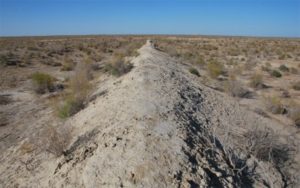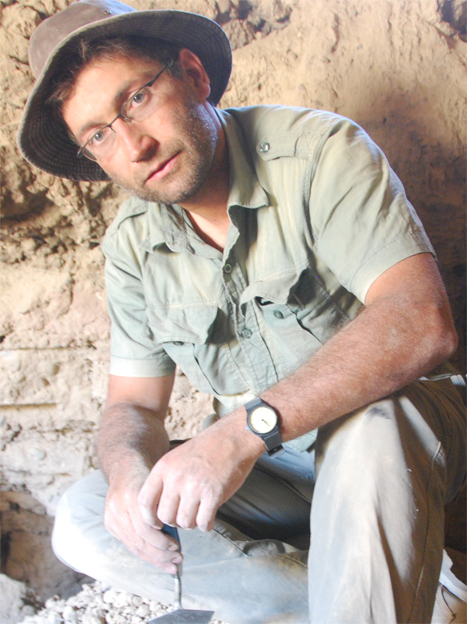Since 2016 the Uzbek-American Expedition in Bukhara (UzAmEB) is conducting new excavations at the Hellenistic and post-Hellenistic site of Bashtepa. Now situated among barkhan dunes of the Kyzyl-Kum to the west the Bukhara oasis, the site was once situated on the very border of the oasis on one of the major routes of communication to the north, towards Choresmia and from there further into Eastern Europe. Together with about a dozen of well-preserved small hamlets or individual manor houses and ubiquitous traces of irrigation canals and field systems it is part of a uniquely preserved relic landscape dating to the Hellenistic and post-Hellenistic period.

The speaker will present the results of the first season of excavations. They suggest that Bashtepa was founded as a border fortress during the Early Seleucid period after the death of Alexander the Great (end of the 4th/first half of the 3rd century CE). Of particular interest are fragments of “Greek” pottery and well-preserved remains of a pastoral campsite, occupying the summit of the site and dating to the 1st century CE, thus being contemporary with many of the kurgan cemeteries in the Bukhara region. As the first pastoral settlement from post-Hellenistic Sogdiana ever systematically studied, this has the potential to substantially improve our understanding of agro-pastoral complexity in post-Hellenistic Sogdiana and beyond.
Sören Stark studied Oriental Archaeology and Art History, Ancient History and (European) Art History at Martin-Luther-Universität Halle-Wittenberg. He received his doctorate in 2005 with a study on the archaeology and history of the pre-Muslim Turks in Central and Inner Asia which was published in 2008 as Die Alttürkenzeit in Mittel- und Zentralasien. Archaeologische und historische Studien (Nomaden und Sesshafte 6), Wiesbaden: Ludwig-Reichert-Verlag. His other works range chronologically from the Iron Age up to the pre-Mongol Middle-Ages and deal with various aspects of archaeology, art history and history in Central and Inner Asian as well as in neighboring cultural areas.
From 2005 to 2008 he led archaeological surveys and excavations in Northern Tajikistan (near Shahriston and Istaravshan/Urotepa). Before joining the faculty of ISAW he was Junior Fellow at the Excellence Cluster TOPOI and teaching at the Freie Universität in Berlin.
His main research focus lies on the political and cultural interrelations between pastoral nomads in Central and Inner Asia and their sedentary neighbors. Currently, he is preparing a book on territorial fortifications in Western Central Asia (with forth-coming fieldwork in Uzbekistan). He is also co-editor of a Handbook of Central Asian Archaeology and Art which is presently under preparation at Oxford University Press.



Interesting topic. I am eager to attend.
Thank you for your interest. You are welcome to join us for lunch with the speaker before the talk at the Scarsdale Library. May I ask how you find out about the talk?
Peter Feinman
President
We are looking forward to attending. Just to confirm, lunch is open to all and it will be at the Scarsdale Library?
Yes. WE asked people to place an order with Lange’s Deli in Scarsdale for delivery to the library
https://www.langesofscarsdale.com/
May I ask how you found out about the talk.
Peter Feinman
President